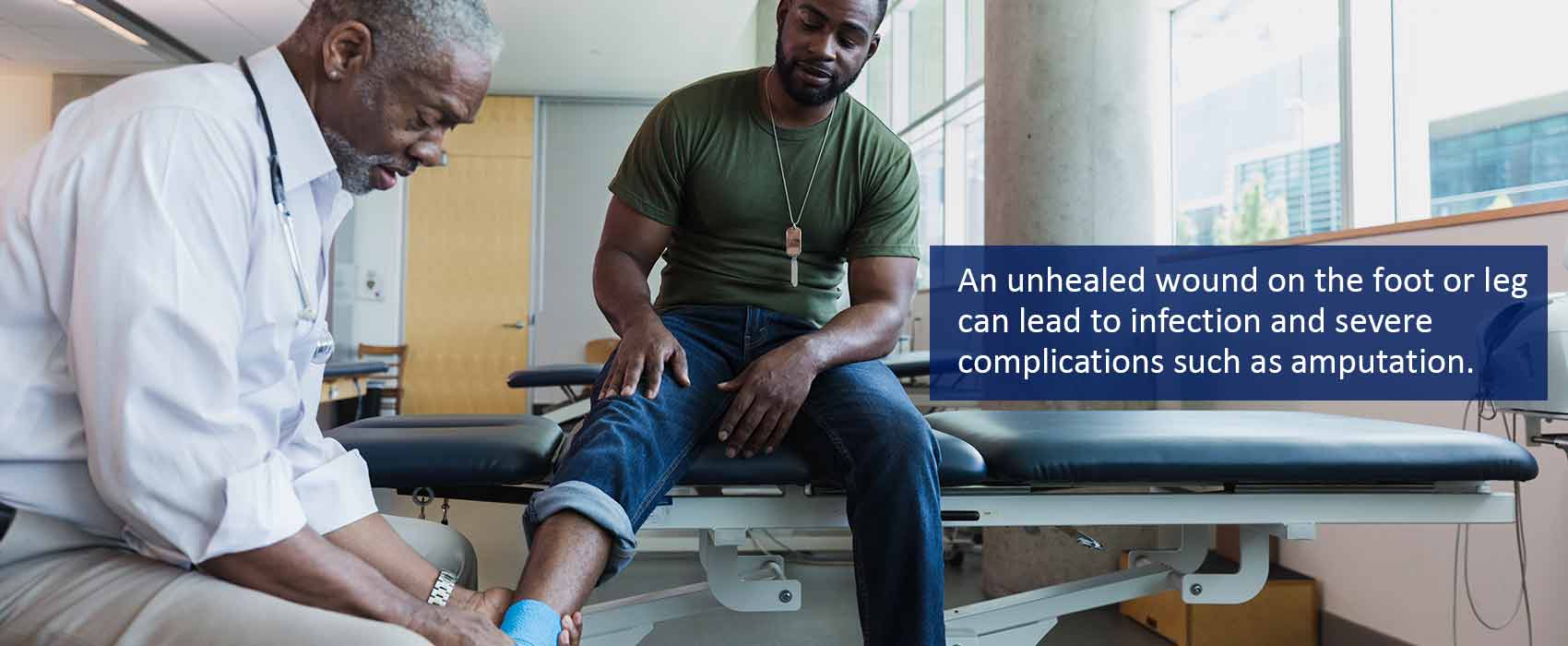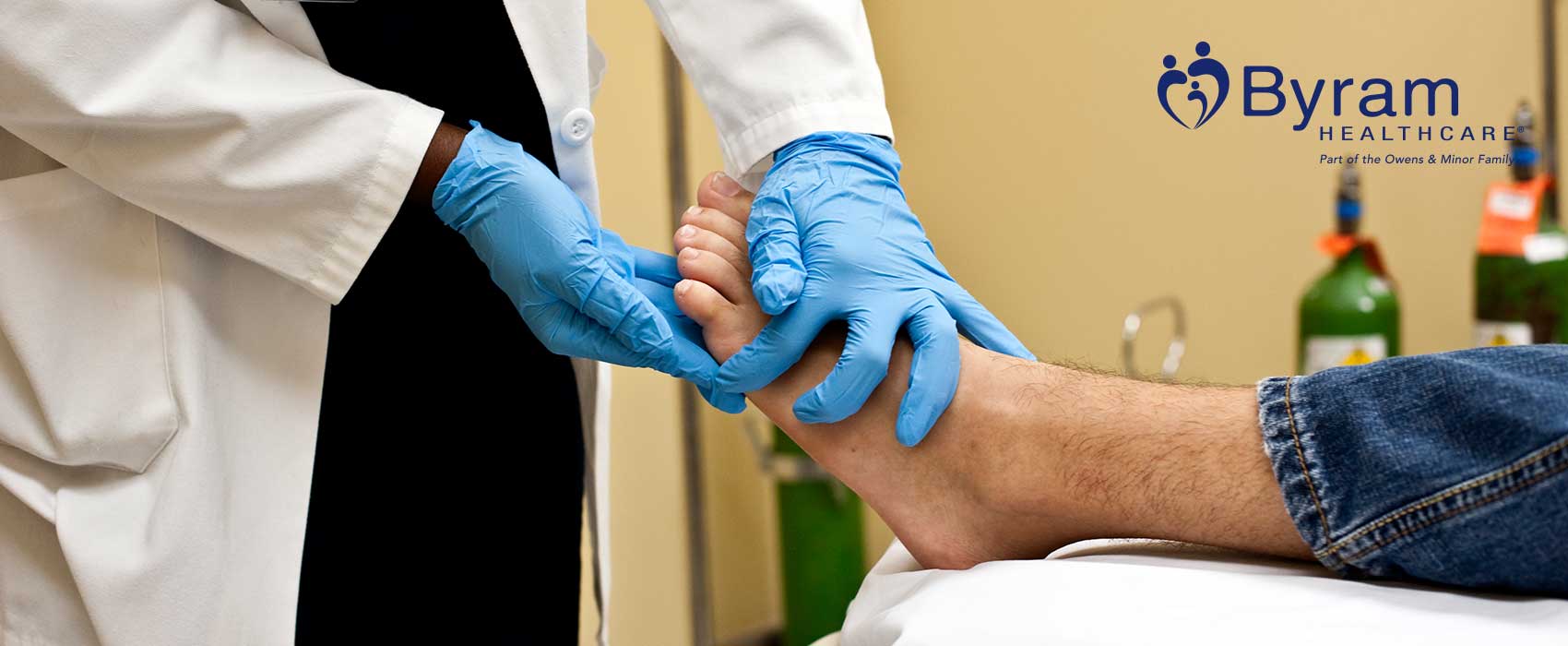
Chronic wounds can be extremely burdensome to both patients and doctors. When a wound doesn’t heal properly, it can cause serious complications and requires ongoing care to ensure that it heals without further incidence. While any wound has the potential to become chronic, there are a few more common types of chronic wounds that people experience. In this article, we’ll cover the breakdown of chronic wounds, the most common types of chronic wounds, and how to treat them using the proper wound dressings.
How a Wound Becomes Chronic
All wounds start out as acute wounds. The primary way that a wound becomes chronic is an interruption of the wound healing process. Acute wounds progress through hemostasis, inflammation, proliferation, and remodeling without incidence. Wounds become chronic during the inflammation stage when your body is trying to protect the site of injury and jumpstart the healing process. If this occurs, it’s important to change your treatment plan to accommodate for specialized chronic wound care. There are many factors that affect wound healing and it’s critical that you keep the wound cleaned and dressed in the correct bandages to help avoid the further breakdown of tissue.
Risk Factors for Chronic Wounds
Anyone who has an acute wound is at risk for it becoming chronic. However, there are some people that are more at risk than others. If you have one or more of the following conditions, you’re at a higher risk for developing chronic wounds:
- Diabetes
- High cholesterol
- Severe burns
- Cancer
- HIV/AIDS
- Chronic medical conditions
- Vascular disease
- Heart disease
- Hypertension
- Atherosclerosis
- Anemia
- Varicose veins
- Deep vein thrombosis
- Elderly
- Immobility
- Obesity
- Unhealthy lifestyles like smoking or a poor diet
- Sedentary lifestyle
- Previous history of ulcers
- Multiple surgeries
- Bed rest
- A weakened immune system
- High-risk occupations with radiation exposure or long periods of sitting
If you fall under one of the above risk factor groups, talk to your doctor about preventative actions you can take to reduce your chances of developing a chronic wound.
The Most Common Types of Chronic Wounds
While all wounds start as acute, there are certain injuries that are more likely to become chronic. The most common types of chronic wounds include ulcers, infectious wounds, ischemic wounds, surgical wounds, and wounds from radiation poisoning.
Ulcers
Ulcers are the most common type of chronic wounds. Since they can occur due to a number of reasons, you should always keep an eye out for any warning signs. Talk to your doctor if you have any risk factors or if you notice the development of an ulcer. Some common types of chronic wound ulcers include venous ulcers, arterial ulcers, diabetic foot ulcers, and pressure ulcers.
Venous Ulcers
Venous ulcers develop when there are problems with the valves that are located inside of the veins of your lower extremities. Either they’re not working sufficiently or you’re suffering from vein disease. This leads to problems with blood flow and causes blood to pool in the affected veins. Once blood begins to pool, you’ll notice swelling of the extremities and eventually the development of an ulcer near the area. Venous ulcers are most commonly found in the area of your leg that would usually be covered by a sock—nearby the ankle. Venous ulcers can also form below the knee depending on the vein that’s affected.
If you suffer from vascular disease or deep vein thrombosis, you’re at a higher risk for venous ulcers. You may also be in a high-risk group if you have diabetes, heart failure, pregnancy, or obesity. Talk to your doctor immediately if you notice any signs or symptoms of venous ulcers.
Arterial Ulcers
Your veins aren’t the only thing that can cause ulcers to develop. Arterial problems can also lead to ulcers. Arterial ulcers are most often caused by insufficient nutrients in the blood to the lower extremities. This causes a deficiency that can lead to tissue damage and oxygen deprivation. Arterial ulcers are commonly found between the toes, on top of the toes, or along the outer ankle. Arterial ulcers have a pale hue to them and can appear pink, yellow, or gray. They’re accompanied by pain and can lead to permanent damage if left untreated.
You’re at a higher risk for developing arterial ulcers if you have a history of vascular disease, renal failure, trauma, high blood pressure, obesity, or suffer from other conditions. Talk to your doctor for a full list of risk factors and what you can do to prevent arterial ulcers from forming.
Diabetic Foot Ulcers
Poorly managed diabetes can lead to a number of complications, including diabetic foot ulcers—also known as neuropathic foot ulcers. Diabetic foot ulcers are a result of the loss of sensation of lower extremities, tissue breakdown, and eventually an ulcer. These often go unnoticed due to loss of sensation, which can lead to infection and further problems. If not treated properly and in a time sensitive manner, diabetic foot ulcers can lead to partial or full amputation of the foot or even leg.
Diabetic foot ulcers can be caused by a number of factors, which is why diabetic management is so important. If you’re having difficulty with your diabetes, talk to your doctor about what you can do to lead a healthier life. To avoid serious problems, make sure to inspect your feet regularly for any signs of ulcer development.
Pressure Ulcers
Pressure ulcers occur in a localized area due to prolonged pressure or friction on an area of your body. This pressure eventually causes the tissue in the area to compress and form an ulcer. They’re most commonly found on bony areas of the body such as the heels, elbows, knees, shoulder blades, coccyx, spine, ankles, or even the back of the head. Pressure ulcers progress through four stages, starting with tenderness and progressing to full-thickness ulcers that affect deeper levels of underlying tissue. Pressure ulcers are primarily caused by immobility, spinal cord injury, various conditions that can affect blood flow, fever, and excess pressure in any area for too long. One of the best ways to treat pressure ulcers includes frequent turning or repositioning.
Infectious Wounds
When infection isn’t treated properly, regardless of the type of infection, it can lead to a chronic wound. These types of chronic wounds are especially dangerous as the infection can spread to the blood and travel to different parts of the body. Infectious wounds are often accompanied by a foul odor, pus, drainage, dead tissue, inflammation, debris, and a fever. Contact your doctor immediately if you notice any signs or symptoms of infectious wounds to avoid serious problems like amputation.
Ischemic Wounds
Ischemic wounds are any type of wound that isn’t getting enough blood supply. The limited blood supply also means that an area isn’t being oxygenated properly and is not getting enough nutrients for a healthy healing process. Some common signs and symptoms of ischemic wounds include a weakened pulse which can cause the area to become pale and even cold. Contact your doctor at any sign of an ischemic wound.
Surgical Wounds
If you need to undergo surgery, you’ll be left with wounds from the incision. When properly cared for, these wounds will heal without incident. However, if there is damage to the blood supply or if you don’t care for the surgical wound properly, it will become chronic and lead to further complications. Surgical wounds that have become chronic appear hot, swollen, and have a reddish appearance.
Radiation Poisoning Wounds
Wounds that occur from radiation poisoning can be from either therapeutic radiation or accidental radiation. Over time, prolonged exposure weakens your immunes system, which leads to prolonged healing time and chronic wounds. When radiation poisoning is severe, it damages exposed tissue and needs to be cared for immediately. If you have radiation poisoning wounds, you may notice slight blistering that’s accompanied by itching or inflammation. Many people also experience nausea and abdominal pain.
Treatment of a Chronic Wound
If you have a chronic wound, regardless of what type it is, it’s important that you treat it properly. When you do, you’ll avoid risking further complication and serious problems. The best way to treat a chronic wound is to regularly clean it and use the proper wound dressings. In serious instances, you may need to undergo wound debridement. Debridement can be extremely painful and may require anesthesia however, it’s important to improve overall blood supply and nutrients. Make sure that you keep your wound clean and apply any topical creams as directed by your doctor. Your treatment plan may include taking anti-inflammatory medications or antibiotics and you’ll likely need to change your diet for optimal nutrition and healing. If you have any questions about how to properly heal your chronic wound, always talk to your doctor for the best course of action. In the meantime, Byram Healthcare has a wide variety of wound care products to help you safely and effectively heal both chronic and acute wounds.




